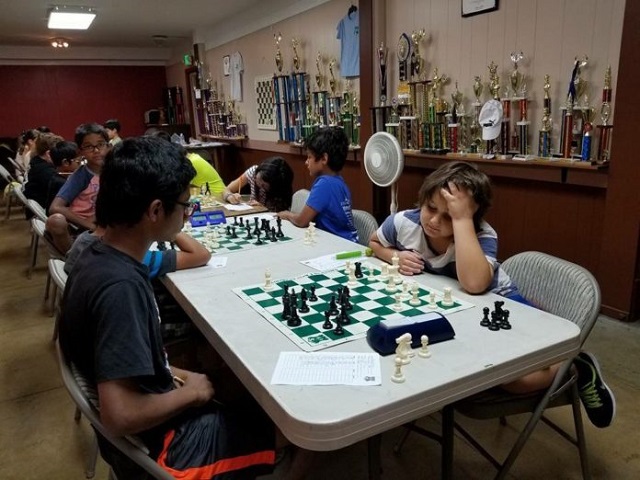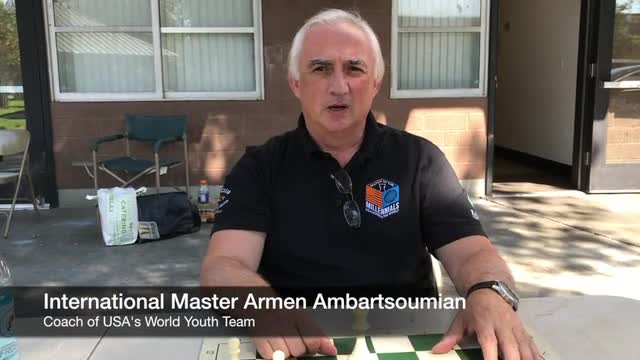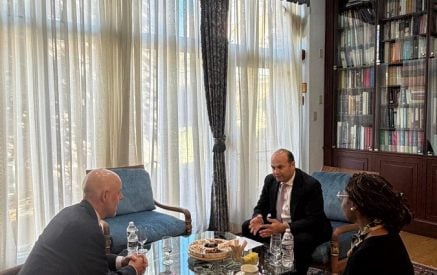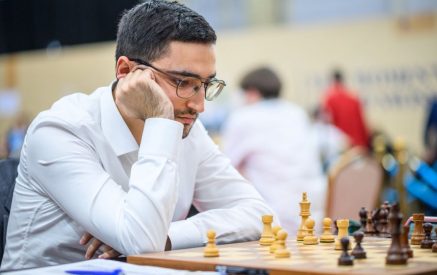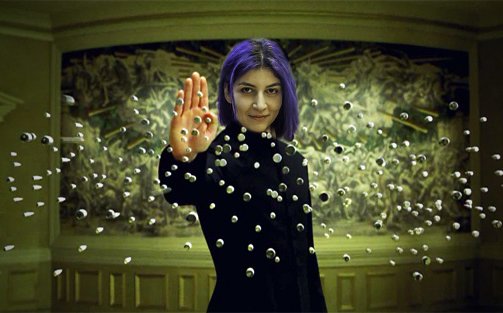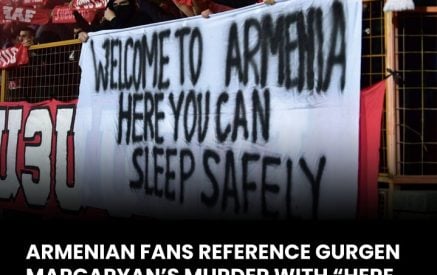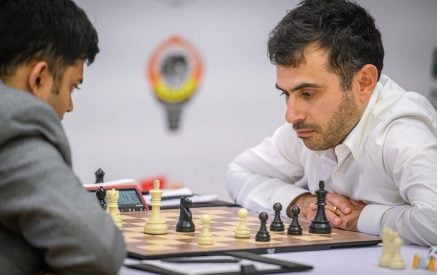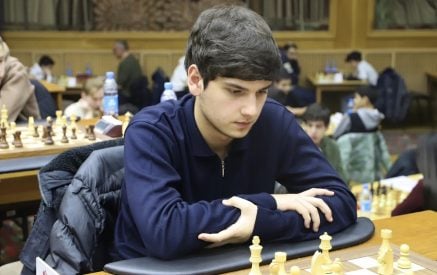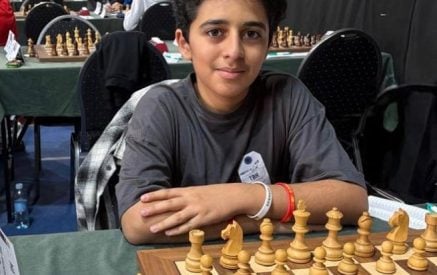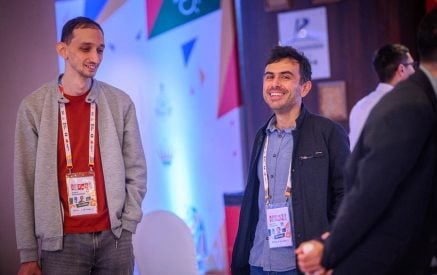The Armenian Mirror-Spectator. GLENDALE, Calif. – Armenians have played chess since medieval times and the game is considered a national pastime. It is not a surprise that Armenians are active in the game in the Los Angeles area. One of the main institutions teaching chess there is called American Chess Academy. It was founded in 2008 in Glendale as a nonprofit organization by Armen Ambartsoumian, a former first head coach of the national chess team of the Republic of Armenia, and it has many Armenian coaches.
Over the years, the academy expanded, opening seven branches in the Los Angeles area in places like Pasadena, Burbank, North Hollywood, Van Nuys, Simi Valley and Calabasas, Thousand Oaks. A branch in Reseda eventually was closed. Ambartsoumian said that perhaps 70-80 percent of the students in Glendale were Armenian, 70 percent in North Hollywood, and 50 percent in Pasadena, but the more one went to the west the fewer Armenians.
The largest club, in Glendale, had somewhere between 130 and 150 students this year prior to the COVID-19 crisis.
Ambartsoumian said, “We had two goals. First was to introduce the game of chess to students, and through games, conduct an educational program and teach children to think. Second was sports success, since we have well known and respected trainers and good results.” The clubs produced many champions and became well known in the US. The youngest American grandmaster, Samuel Sevian, was a former student at the academy.
Read also
Ambartsoumian said they would organize five or six tournaments a year, with at least 200 people participating in each one. In addition to the students studying in classes or taking private coaching at the clubs or branches, the academy provided afterschool programs at 17 schools for more than 400 children conducted by 14 or 15 coaches. These were six-week programs in general, but every school was different.
There was one private school, the Laurence School, which itself paid for the lessons. Most of the schools were public ones at which the parents paid monthly tuition to the school, which would then pay the academy. Among the list of schools participating in the past are two Armenian ones, St. Gregory Alfred and Marguerite Hovsepian School in Pasadena, which had lessons for four years till 2019, and the Armenian Sisters Academy in Montrose.
There were summer chess camps at which champions were invited like Levon Aronian, one of the highest rated players in history who won the FIDE World Cup twice.
Coronavirus Strikes
“In one day, everything collapsed,” Ambartsoumian exclaimed. “This was a great blow. We did not know what to do.” The academy chapters had to be shut down in mid-March. Seeing children being taught via Zoom in schools, the academy decided to try this for its branches. Ambartsoumian said that he was charging six dollars, an extremely low rate per class, to enroll as many people as possible and not lose the children they had.
The afterschool programs could not be continued. The students there were not as dedicated to the game, and the more serious ones in any case already would come to the academy’s clubs.
Tatev Abrahamyan, coach at the Glendale branch, said that as the tournaments she was going to play in have been cancelled, her main focus is online teaching now. Abrahamyan was born in Armenia but came to the US in 2001 and was coached by Ambartsoumian. She tied for first place in the US Women’s Chess Championship in 2004, 2011 and 2014, was a member of the US Women’s Olympic team since 2008 and a bronze medalist in the 2008 Olympiad. She is one of the highest ranked female chess players in the US.
Abrahamyan said that at the end of March, it was unclear how long the academy would have to stay closed but many students might not come back as time would pass. Therefore, the coaches began emailing all of the parents to see if there was interest in resuming online, and on April 3 the first lesson began.
The students were split into five groups by their chess ratings, Abrahamyan said. Zoom was used for lessons and various chess websites or programs were used for demonstrations. She would share her screen, with a chessboard, and give a lecture. Audio was on but not video, to avoid distractions.
There are two sessions per week for each group. Abrahamyan organizes tournaments among the students on a website and observes.
Abrahamyan said that there were some advantages to this setup compared to physical lessons. She said, “It gives me more control than you have in a classroom…The students are generally respectful. Though sometimes they speak out of turn, that always happens.”
Another difference is in the structure of the lessons. The classroom lessons, Abrahamyan said, were one hour long, including 40-45 minutes playtime with corrections and 15 minutes of lecture, and for the advanced group, one and a half hours long, including one hour of playtime. The online version is more lecture, with less playtime, as this is harder to do.
Abrahamyan said she hoped that the students will play more on their own to make up for these constraints. She also said she noticed that some are more engaged now, as they do not have their friends around to provide distractions and fool around as much.
Abrahamyan estimated that perhaps half or a bit less of the students at the Glendale chapter have continued online. Perhaps, she said, some of the parents are waiting to see if things will turn back to normal soon, while others are struggling financially.
The Long-term Outlook
While Zoom classes may help, Ambartsoumian still was concerned. He said, “When there are no tournaments, and we not see each other, it is like other sports like basketball or football. When there are no competitions, it will die. It would take a lot of work to turn this into an interesting system.”
Abrahamyan said that it is very different playing online. It is hard to focus as much and the same tension of playing in a physical tournament is not there. Interestingly, the quick play or shorter time per game open tournaments held online at present also are problematic because of the possibilities of players cheating. Prestigious tournaments in the past were not usually held open or online and generally are with classic time control (lasting 5-6 hours per game).
At present, the academy uses various third-party websites to assist in online lessons, but Ambartsoumian said that if the COVID-19 situation continues for a long time, it would be necessary to make more expenditures on their own website. It would not make sense to do this if the situation would end in a month or two, he said.
If it did end, with the practicing of social distancing continuing, Ambartsoumian said the academy would try to reopen physically too. He said, “We can do it the way restaurants are doing it, only using a small percentage of their full capacity.”
The future appears unclear for chess because of the uncertainty about how society will manage the ongoing COVID-19 pandemic. The American Chess Academy is discussing the situation with some of the schools with more active programs and making proposals for May.
Ambartsoumian said, “If this lasts a long time, with the uncertainty and most parents having lost their incomes, I don’t know how it will end.” Those who are having trouble paying rent will not be able to send their children for chess lessons.
One bright side is that Ambartsoumian said it is becoming more practical to give chess lessons to students living outside of California now. Abrahamyan noted that several people from different parts of the country have contacted her for lessons.
For more information on the American Chess Academy, see its website or Facebook site.
Main caption: Chess class in 2017 at the Glendale chapter of the American Chess Academy



















































